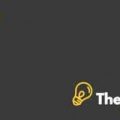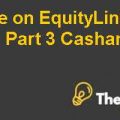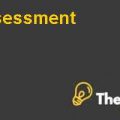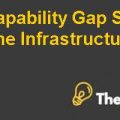The Boeing 777 Case Study Solution
Cost of Capital:
The cost of capital that should be applied to the project is 21.53 percent, which is derived from multiplying the market risk premium with commercial aircraft beta of Boeing Company and then added into the risk free rate.
Risks free rate is derived from the long term United States treasury bonds whose yield on October 1990 is 8.82 percent. Reason to take the long term US Treasury bond’s yield as risk free rate is because of the fact that the US treasury bonds are considered the risk free, whose default chances are near to zero.
Market risk premium and tax rate is derived from the case. Market risk premium which is mentioned in the case, is 5.4 percent that is based on 64 years geometric average equity market risk premium, while the tax rate is 34 percent, which is mentioned in Exhibit 10 of the case.
For the purpose of deriving the commercial aircraft beta, too many calculations have been carried out in which first step is to take the overall Boeing’s company levered beta form the S&P 500 market index which shows the figure 1.37 as an imitation from the previous 12 months.
Rationale to select the 12 months levered beta is because it is showing the good reflection of the current market conditions, as the 58 months levered beta is considered the reflection of the longer picture of the company, which might include the outdated information about the company, while 60 days levered beta is considered the short term beta for the company, which might create the biasness during the analysis due to its short term fluctuations.
After that, in second step, average has been taken form three competitor’s unlevered beta for The Boeing Company in order to find the defense aircraft levered beta. Three competitors are Grumman, Northrop and Lockheed. The reason to exclude the McDonnell Douglas from this competition is its debt to equity ratio, which is much high, as a result, it is considered too risky company in competition, which does not meet the statement’s criteria.
Table 1.2 shows the levered beta for defense aircraft of Boeing Company is 0.376. By using the overall company’s beta and the beta for defense aircraft, it has been found that the levered beta for commercial aircraft is 2.353, which is used in Capital Asset Pricing Model (CAPM) formula to find the potential cost of capital (21.53 percent).
Table 1.1: Competitor’s Information
| Grumman | Northrop | Lockheed | Average | |
| Debt to Equity Ratio | 1.756 | 1.288 | 1.182 | |
| Levered Beta 12 Months | 0.730 | 0.720 | 0.690 | |
| Tax rate | 34% | 34% | 34% | |
| Unlevered Beta | 0.338 | 0.389 | 0.388 | 0.372 |
Table 1.2: Potential Cost of Capital
| Cost of Capital | |
| Market Risk Premium | 5.40% |
| Risk Free Rate | 8.82% |
| Beta For Boeing | 1.37 |
| Levered Beta for Defense | 0.376 |
| Commercial aircraft | 6,675 |
| Defense Aircraft | 6,603 |
| Total | 13,278 |
| Levered Beta for Commercial | 2.353 |
| Cost of Capital | 21.53% |
Sensitivity Analysis:
Table 1.3 and 1.4 show the three variables that derive the sensitivity in this project, which are the revenues of the company from this project that are based on the sales volume and sales price of the Boeing 777, and the general and admin expenses of the company form this project along with the research and development percentage over the sales of the company.
Table 1.3: Revenue Assumptions
| Revenue Assumptions | |||
| Extreme Low | Average | Extreme High | |
| Sales Volume | 700 | 1000 | 1200 |
| Sales Price | 100 | 130 | 130 |
| IRR | 13.90% | 18.90% | 20.60% |
Table 1.4: Expenditure Assumptions
| Expenditure Assumptions | |||
| Extreme Low | Average | Extreme High | |
| GS&A / Sales (%) | 7 | 4 | 1 |
| R&D / Sales (%) | 5 | 3 | 1 |
| IRR | 13.50% | 18.90% | 23.50% |
It is the risky project as the extreme high assumption of IRR is below than the potential cost of capital. If the sales volume will fall from 1000 units to 700 then it will create the huge difference between the potential cost of capital and Project IRR, which might create thoughtful future problems for the company. But if it will reach the extreme high situation where research and development and general and admin expenses are at its lowest place, then the Boeing Company will be able to meet the shareholders requirements from the Boeing 777 project in future, but this will lead to the huge uncertainty and ultimately more riskiness.
Due to this high risk and uncertainty, Boeing Company’s shareholders potential cost of capital from Boeing 777 project will decrease.
Recommendations to CEO Frank Shrontz:
Investment in innovations leads to the great success in market, which helps to create and maintain the competitive advantage over competitors. That is why, it has been recommended to the CEO Frank Shrontz to continue with Boeing 777 project as it provides the positive return to the company. This aging in aircraft industry provides the opportunity to Boeing for updating its fleet for the purpose of competing successfully in the aircraft market.
After the detailed analysis of case, it has been recommended to continue the Boeing 777 project because it is fitting the gap in the company related to the passenger capacity range from 350 to 390, which is currently lacking in Boeing Company.
The IRR from the pessimistic approach (Extremely Low) is 13.6 percent, which shows a good return for the company which ultimately increase the revenues and profits for the company. In short, it has been concluded that the data supports to continue with the investment in Boeing 777 project, as it provides the positive returns in future with some other benefits to The Boeing Company...........
This is just a sample partical work. Please place the order on the website to get your own originally done case solution.









